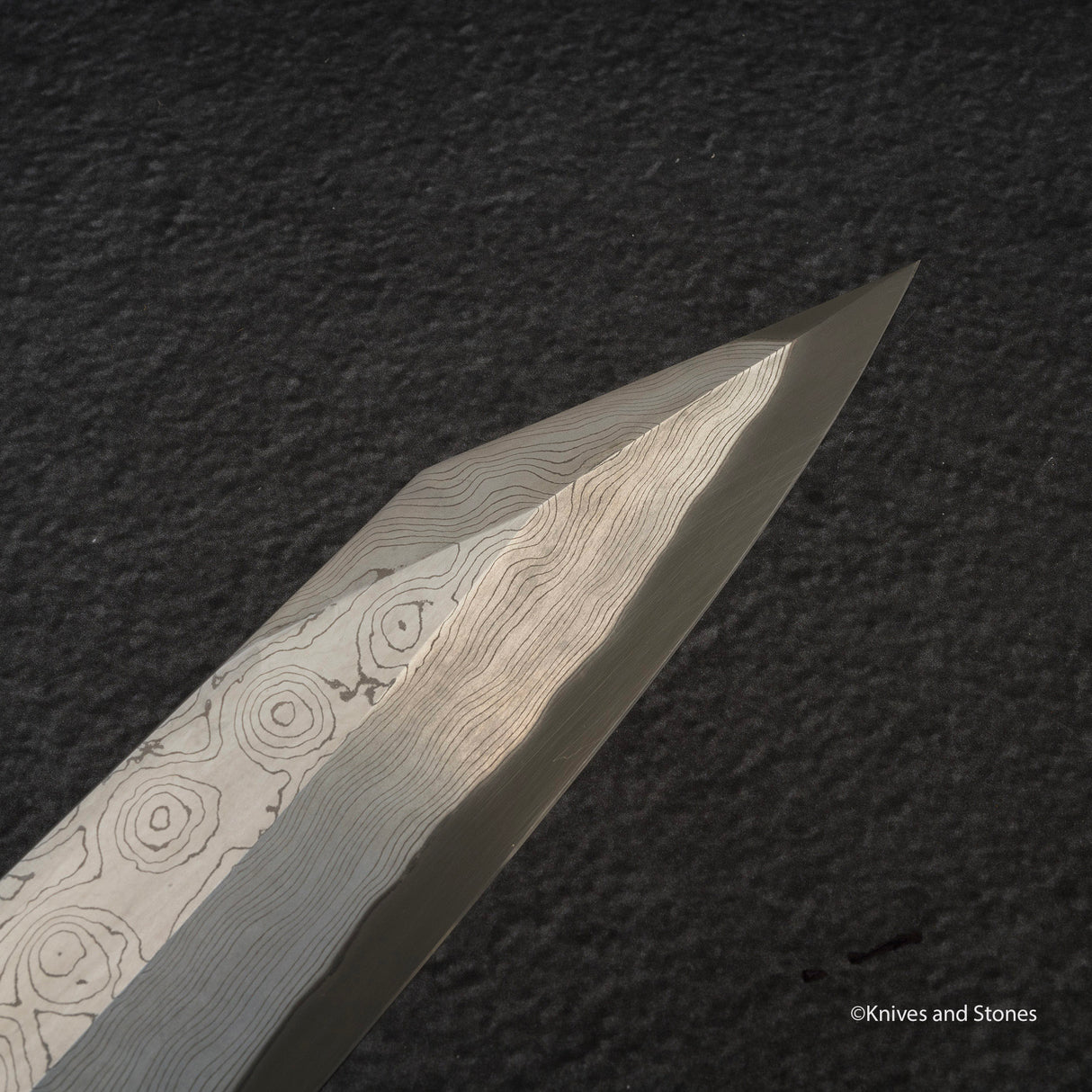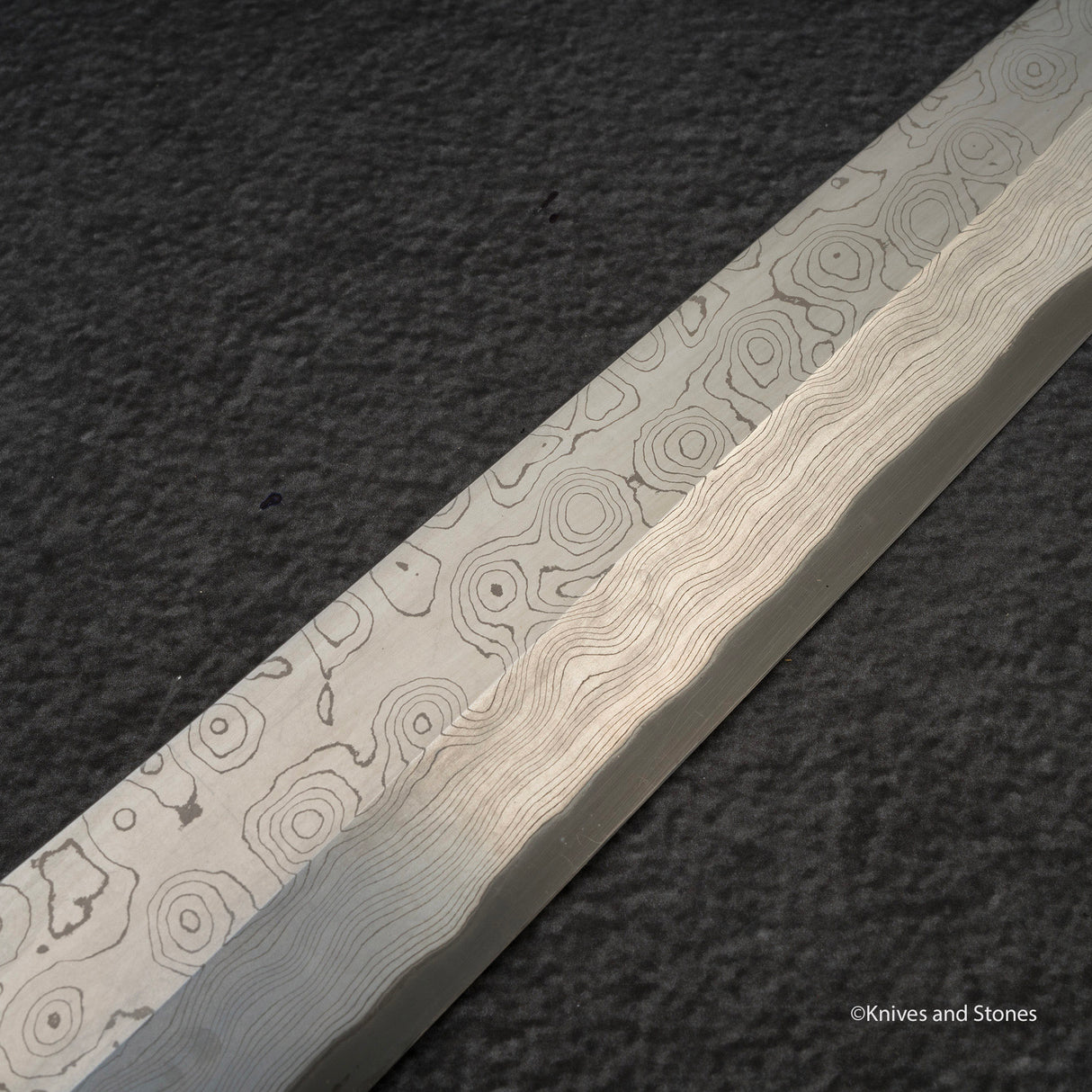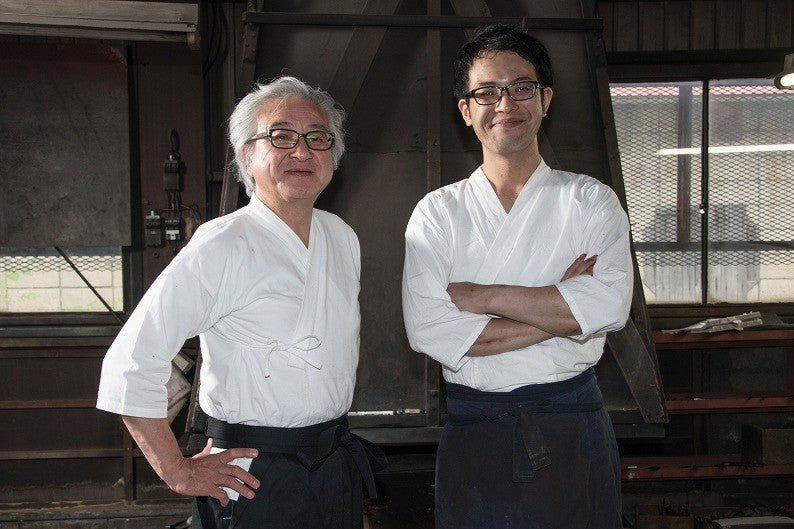Nigara Anmon Kurozome Blue 2 Damascus Kiritsuke Yanagiba 300mm
Nigara Anmon Kurozome Blue 2 Damascus Kiritsuke Yanagiba 300mm is backordered and will ship as soon as it is back in stock.
Couldn't load pickup availability
K&S Price: AU $1,039.00* inc. tax , vs:
| Store CE | AU $1099.0 | -5.77% |
* For overseas buyers you pay no GST (10%) and low shipping rate.
Last Update: 2024-07-09T01:01:28Z
Detailed Specifications
| Line | Nigara Anmon Blue 2 |
| Profile | Yanagiba |
| Bevel Type | Single Bevel |
| Weight | 250 g 8.82 oz |
| Edge Length | 285 mm .11.22 inch |
| Heel Height | 43 mm .1.69 inch |
| Width @ Spine | 4.3 mm 0.17 inch |
| Width @ Mid | 3.3 mm 0.13 inch |
| Width @ 1cm from Tip | 1.0 mm 0.04 inch |
| Steel | Blue 2 / Aogami #2 | Carbon |
| Blade Construction | Nimai- Soft Iron Damascus Clad |
| Hardness (HRC) | 61 - 63 |
| Surface Finish | Etched |
| Handle | Ebony Mosaic |
| Region | Aomori |
| Best for |
|

| Pros | Cons |
|
|
|
Care Instruction
- Don't cut hard things! Japanese knives are brittle so bone hacking is a NO NO!
- Wash with neutral detergent after use, and wipe dry;
- Please don't wash knife with dishwasher, it will damage the wood handle;
- Be careful not to leave the knife close to a heat source for a long time;
- It is a lot more dangerous to cut with a blunt knife than a sharp knife!
- It is best to sharpen a Japanese knife regularly on a waterstone.
- Oil the (carbon) knife if storing for an extended period of time to prevent rust.































